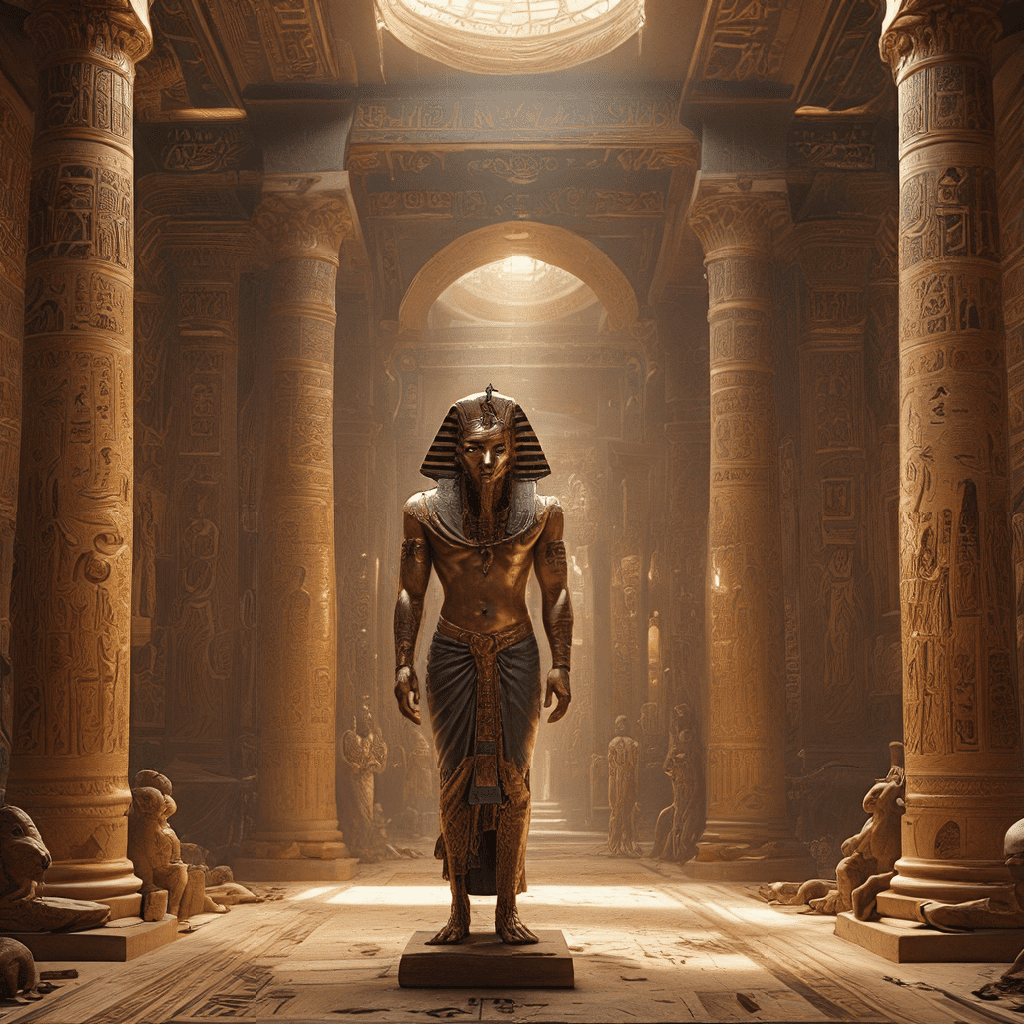1. Introduction: The Significance of the Afterlife in Ancient Egypt
Ancient Egyptians had a deep fascination with the afterlife. Their beliefs about death and the journey beyond were an essential part of their daily lives. They believed that life didn’t end with death, but rather transitioned into another realm. They sought to ensure a continued existence for themselves in this next world, which motivated their elaborate burial practices and rituals.
2. The Journey to the Afterlife: A Complex and Ritualistic Process
The Egyptians invested significant effort in preparing for the afterlife. The process began with mummification, which involved preserving the body for eternity. They believed that the soul needed a physical form to navigate the afterlife. Funerary rituals were elaborate, involving offerings, sacrifices, and processions to guide the deceased’s spirit to the underworld. These rituals were believed to appease the gods and ensure a smooth transition. Scribes and priests meticulously documented these rituals in texts like the Book of the Dead, which provided instructions and spells for the deceased to navigate the challenges ahead.
3. The Underworld and its Guardians: Navigating the Realm of the Dead
The Egyptians envisioned the underworld as a vast and complex realm called Duat. The deceased had to navigate through its various levels, each guarded by powerful deities. The journey was fraught with dangers, and the deceased needed divine guidance and protection. Anubis, the jackal-headed god, served as the guide and protector of the dead. He weighed the heart of the deceased against the feather of Ma’at, the goddess of truth and justice. Thoth, the god of wisdom and writing, served as the scribe, recording the judgment. Horus, the falcon god, represented the king and the light of the sun, symbolizing rebirth and resurrection.
4. The Weighing of the Heart Ceremony: Justice and Judgement in the Afterlife
The weighing of the heart was a crucial moment in the afterlife journey. The deceased’s heart, representing their actions and deeds in life, was weighed against the feather of Ma’at, the symbol of truth and justice. A heart lighter than the feather meant the deceased was deemed righteous and allowed to enter the afterlife paradise. However, a heavy heart, signifying a life filled with transgressions, led to the punishment of being devoured by Ammit, the goddess of destruction and the devourer of the wicked souls. This symbolized the consequences of a life unburdened by guilt and sin.
5. The Fields of Reeds: A Paradise for the Righteous
For those who successfully navigated the underworld and passed the weighing of the heart ceremony, the afterlife held a paradise called the Fields of Reeds. This realm was a blissful haven of abundance and eternal life. The righteous enjoyed a life of eternal happiness, reunited with loved ones. They were free to indulge in their pleasures, fishing, farming, and feasting, without the burdens of life on Earth. Their spirits were free to roam the afterlife, a place of peace and eternal joy.
6. Exploring the Afterlife Through Art: Visual Representations of the Journey
The ancient Egyptians were masters of visual storytelling. They used tomb paintings and reliefs to depict the deceased’s journey through the underworld, from mummification to the final judgment. These artworks provided a detailed visual guide to the afterlife journey, and were meant to guide and comfort the deceased. The symbolism and iconography of funerary art were carefully chosen to represent the different stages of the afterlife journey. Famous examples of this art include the tomb of Tutankhamun, a treasure trove of artifacts and murals depicting the afterlife, and the Temple of Abydos, a complex of religious structures dedicated to Osiris and the afterlife.
7. The Book of the Dead: A Literary Guide to the Afterlife
The Book of the Dead is a collection of spells and incantations designed to guide the deceased through the challenges of the afterlife. These texts provided a practical guide to navigating the underworld and overcoming its perils. They contained prayers to the gods, instructions for navigating the obstacles, and spells to protect the deceased. The Book of the Dead was often included in the burial chamber, believed to help the deceased during their journey. Its content provides valuable insights into the Egyptian beliefs about death and the afterlife, and their enduring desire for a peaceful and fulfilling eternal existence.




